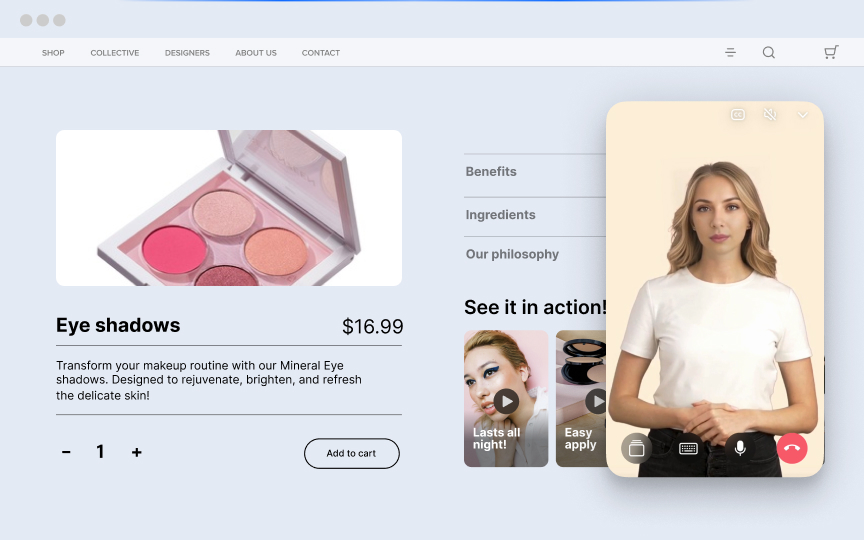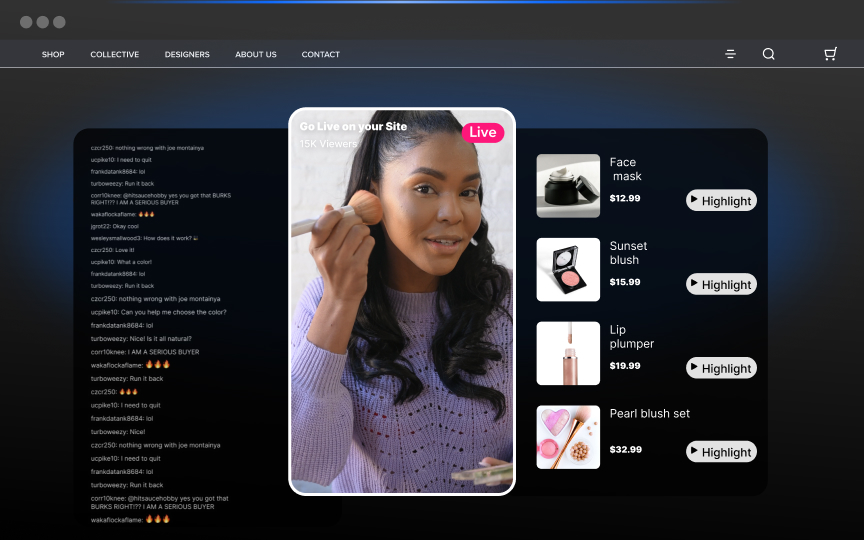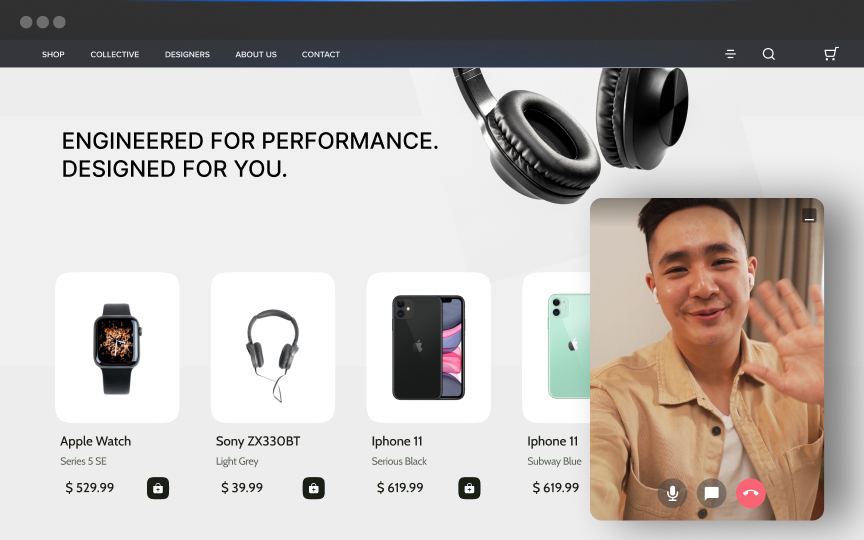How Purchase Intent Can Improve Marketing Strategy? 2024 Guide
What Is Purchase Intent And Why Is It Important?
Purchase intent is a measure of how likely a customer is to buy a product or service. It involves understanding the buyer's journey and their readiness to make a purchase. Tracking purchase intent is crucial for marketers to create targeted strategies and increase sales.
How Does Purchase Intent Affect Online Store Metrics?
Purchase intent directly influences key metrics in online stores. For instance, when customers show high purchase intent, conversion rates increase significantly. This means more visitors turn into paying customers. Higher purchase intent also leads to better average order value (AOV) as customers are more willing to purchase additional items or opt for premium versions.Moreover, purchase intent helps in reducing cart abandonment. When marketers can accurately assess purchase intent, they can send personalized messages or offers to potential buyers, encouraging them to complete their purchases. Enhanced customer engagement often results in improved customer lifetime value (CLV), which is a key metric for eCommerce success.
Why Should Marketers Focus On Purchase Intent?
Focusing on purchase intent allows marketers to create more personalized and efficient marketing strategies. By understanding buyer personas, they can craft messages and offers that resonate with specific customer segments. This targeted approach helps in engaging the right audience at the right time.Purchase intent data is invaluable for optimizing ad spend and improving the return on investment (ROI). Marketers can allocate their budget more effectively by targeting customers who are more likely to make a purchase. Additionally, monitoring purchase intent helps in fine-tuning the customer journey. By identifying and addressing pain points in the buying journey, marketers can enhance the overall shopping experience and build stronger customer relationships.
How To Identify Purchase Intent?
Identifying purchase intent involves using various tools and analyzing user behavior to determine if a customer is likely to buy. These approaches provide valuable insights for tailoring marketing strategies to prospective customers.
What Tools Can Help Identify Purchase Intent?
Several tools are available to help identify purchase intent. Intent data platforms, such as KickFire, analyze IP address intelligence to pinpoint visitor intent from their behavior. Customer data platforms (CDPs) aggregate and analyze data from various channels to provide insights into customer behavior.Lead scoring systems, which utilize artificial intelligence, help prioritize prospects based on their likelihood to convert. Tools like these can analyze search queries, website engagement, and off-site web activity to generate intent indicators. For B2B businesses, intent data can help identify which companies are actively researching their solutions.For a deeper analysis, businesses can utilize specialized intent marketing tools that monitor content consumption data and social media activity. Insights from these tools inform marketing strategies to target users most likely to purchase.
How Can User Behavior Indicate Purchase Intent?
By examining user behavior such as search queries and website engagement, businesses can better understand customer intent data. Interaction patterns—like repeated visits to a product page—suggest a high level of interest. Navigational intent is indicated when users specifically search for a brand or product, implying a likelihood to buy.Transactional intent is evident through behaviors like adding items to a cart or filling out forms for pricing information. Other signals include social media activity that showcases brand mentions or inquiries about product features.Surveys are another method to gauge intent by directly asking users about their needs or timelines for purchasing. Understanding these behaviors can significantly enhance the ability to spot active intent, optimizing marketing efforts to convert leads efficiently.Find more details on these behaviors from Gartner's insights on intent data.
How To Improve Purchase Intent?
Improving purchase intent is critical for any successful marketing strategy. By focusing on effective strategies and personalization, companies can engage customers and drive higher conversion rates.
What Strategies Enhance Purchase Intent?
Several strategies can significantly enhance purchase intent. Intent marketing is essential. It targets customers based on their online actions and behavior, such as search queries and page views, to identify those interested in a product or service. This allows marketers to tailor their content strategy accordingly.Engagement is another crucial factor. Regularly interacting with customers through various touchpoints, such as social media and personalized emails, keeps them interested and fosters a strong connection with the brand. Consistent and optimized marketing content like blog posts, videos, and infographics can greatly influence purchase decisions.Finally, optimizing customer experience is key. Providing a seamless and enjoyable journey from discovery to purchase can significantly boost purchase intent. Businesses should regularly review and improve website navigation, mobile compatibility, and overall usability.For more detailed strategies, check out this comprehensive guide to optimization.
How Does Personalization Affect Purchase Intent?
Personalization has a profound impact on purchase intent. Tailoring marketing content to meet individual needs and preferences can make customers feel valued and understood. Personalized experiences, such as product recommendations and targeted ads, often result in increased engagement and higher conversion rates.Using personalized emails is a highly effective approach. These emails can address customers by name and offer content based on their past behaviors and preferences. This personal touch can significantly improve the customer experience and foster loyalty.Moreover, content optimization for personalized experiences helps cater to different segments of the audience. By using data analytics to understand customer behavior, businesses can create personalized content that resonates more deeply, making customers more likely to purchase.For a deeper dive into the power of personalized content, explore this detailed resource on intent marketing.
How To Incorporate Purchase Intent Into Your Marketing Strategy?
Using purchase intent data allows businesses to target potential customers more accurately and enhance their marketing efforts. Integrating this data into various tactics can drive better results and improve the overall customer journey.
What Marketing Tactics Can Leverage Purchase Intent?
Several tactics can benefit from purchase intent data. Account-Based Marketing (ABM) is one of the most effective strategies. By focusing on high-value accounts and using purchase intent data, businesses can create personalized marketing campaigns that resonate with these accounts.Email campaigns can also be improved by understanding what products or services a prospect is interested in. This allows marketers to send targeted emails with relevant content, increasing engagement and conversion rates.SEO and content marketing can be optimized using intent data. Knowing what keywords and topics your target audience is searching for helps in creating content that addresses their needs, improving your site's search ranking and driving organic traffic.
How Can Purchase Intent Data Inform Ad Campaigns?
Purchase intent data can greatly enhance ad campaigns by ensuring ads are seen by the right audience at the right time. This is essential for creating effective, intent-based ads that resonate with potential buyers.Social media campaigns can benefit from purchase intent data by targeting users who have shown interest in similar products or services. This increases the likelihood of engagement and conversions. Combining this data with advertising platforms' targeting tools can make ads even more precise.CRM and automation systems can integrate purchase intent data to refine ad targeting further. Automated workflows can trigger specific ads based on a user’s behavior, ensuring that messages are timely and relevant, thus moving leads through the marketing funnel more efficiently.Using purchase intent data also helps in creating targeted promotions and offers. By knowing what a customer is interested in, businesses can create special deals that are likely to attract these potential buyers, enhancing customer acquisition and retention rates.
How To Measure The Impact Of Purchase Intent On Marketing Outcome?
Measuring the impact of purchase intent on marketing outcomes helps businesses optimize strategies to improve conversions and return on investment (ROI). Key metrics and methods will show the significance of customer intent in shaping marketing efforts.
What Metrics Are Affected By Purchase Intent?
Purchase intent affects various metrics crucial for evaluating marketing success. One primary metric is conversion rates, which indicates how many potential customers complete a purchase. Higher purchase intent generally leads to higher conversion rates.Another important metric is return on investment (ROI). Understanding purchase intent helps to allocate marketing resources more efficiently, boosting overall ROI. Analytics tools can provide insights into how well marketing campaigns are translating to actual sales.Consideration lift and purchase intent lift are also relevant. These metrics measure changes in customer consideration and intent after specific marketing activities.Brand equity and customer lifetime value (CLV) are longer-term metrics influenced by purchase intent. Effective tracking of these metrics helps in designing campaigns that build a strong brand and foster long-term customer relationships.
How To Track Changes In Purchase Intent Over Time?
Tracking changes in purchase intent requires both qualitative and quantitative methods. Surveys and customer feedback forms are excellent for gauging customer intent directly. These should be implemented regularly to capture shifts in consumer behavior.Analytics platforms can track interactions revealing purchase intent. Tools like Google Analytics can monitor website behavior, while SurveyMonkey offers solutions for integrating customer feedback.Purchase intent scales can be applied to measure degrees of intent. Responses like “definitely buy,” “probably buy,” and “not interested” allow businesses to quantify the likelihood of purchase, as explained by Lift AI.Monitoring social media mentions and online reviews helps track customer sentiment, which indirectly indicates purchase intent. Regularly reviewing these insights enables businesses to adjust marketing strategies to maintain or increase interest over time.
What Are The Challenges In Utilizing Purchase Intent?
Understanding and using purchase intent can greatly benefit a marketing strategy, yet there are several challenges marketers must address. These challenges include data privacy concerns and common mistakes that can hinder effectiveness.
How To Overcome Data Privacy Issues?
Data privacy is a major concern when utilizing purchase intent in marketing. Many customers may feel uneasy about how their data is used. When collecting and analyzing data, companies must comply with regulations like GDPR and CCPA. Trust is paramount, so transparent communication about data use is essential.Ensuring data quality is another key factor. Companies must deal with multiple vendors and sources, which can lead to inconsistencies. To combat this, businesses should standardize their data collection methods and regularly audit their data for accuracy. This can help in building customer trust and improve retention.Privacy issues also affect customer satisfaction. Customers want to know their data is secure. Implementing strong security measures and obtaining explicit consent can help mitigate these concerns.
What Are The Common Mistakes To Avoid?
A common mistake is not aligning the marketing budget with the goals of intent marketing. Failing to allocate enough resources can lead to ineffective campaigns. Proper planning and budget allocation are crucial for maximizing customer retention and loyalty.Another frequent error is misunderstanding the pain points of the target audience. Misguided data interpretation can result in poorly targeted marketing messages. To avoid this, continuous data analysis and feedback loops with customers are vital.Ignoring communication channels can also undermine the effectiveness of intent marketing. Businesses should use multiple touchpoints, such as email and social media, to engage customers. Ignoring these can result in missed opportunities for building stronger relationships.Additionally, over-reliance on automation tools can be a pitfall. While they can be beneficial, human oversight is necessary to ensure that the marketing efforts remain accurate and relevant.
Frequently Asked Questions
Understanding how to measure purchase intent and apply it to marketing strategies can significantly enhance campaign performance and customer engagement.
What methods are effective in measuring purchase intent?
Effective methods for measuring purchase intent include surveys, analyzing customer behavior data, and utilizing intent data from various online activities. Surveys can directly assess a customer's intent while data analysis helps in identifying patterns and signals that indicate readiness to purchase.
What are the benefits of understanding purchase intentions in marketing strategies?
Understanding purchase intentions helps marketers tailor their strategies more effectively. It can supercharge your marketing strategies by focusing efforts on high-intent customers, leading to higher conversion rates. It also aids in personalizing messages to resonate more with potential buyers, thereby improving engagement and sales outcomes.
How can marketers use purchase intention data to improve their campaign performance?
Marketers can use purchase intention data to target ads more precisely, optimize their sales funnels, and refine product offerings. By focusing on high-intent keywords and user behaviors, they can create campaigns that speak directly to those ready to buy, thus enhancing conversion rates and marketing ROI.
In what ways does buyer intent marketing differ from traditional marketing approaches?
Buyer intent marketing focuses on understanding and acting on specific signals indicating purchase readiness. In contrast, traditional marketing often uses broader demographic data and less specific insights. Buyer intent marketing is more data-driven and personalized, leading to more efficient budget use and higher conversion rates.
What strategies can businesses employ to increase purchase intent among potential customers?
Businesses can increase purchase intent through personalized marketing efforts, effective use of transactional keywords, and fostering trust with high-quality content and reviews. Understanding customer needs and addressing them directly through targeted campaigns and offers can also boost intent to buy.
How does the theory of purchase intention apply to consumer behavior analysis?
The theory of purchase intention helps in segmenting and analyzing consumer behavior by identifying who is more likely to buy. It provides insights into the emotional and rational factors driving purchase decisions, allowing marketers to craft strategies that effectively address these factors, leading to better-targeted marketing and improved sales.










